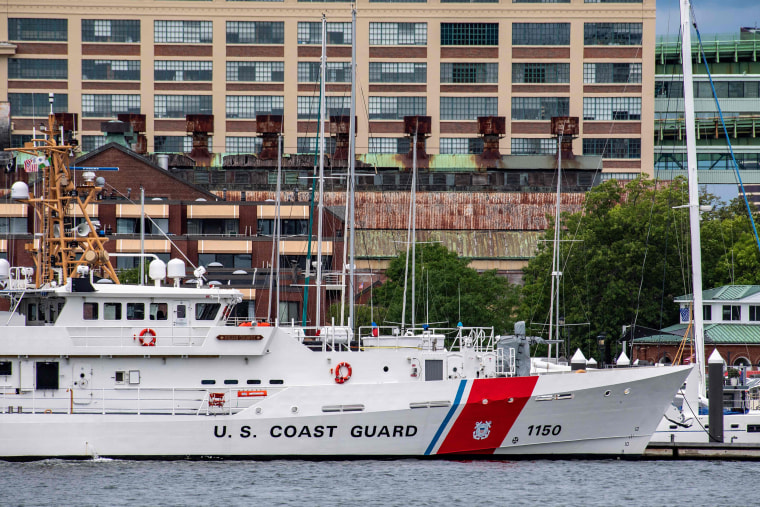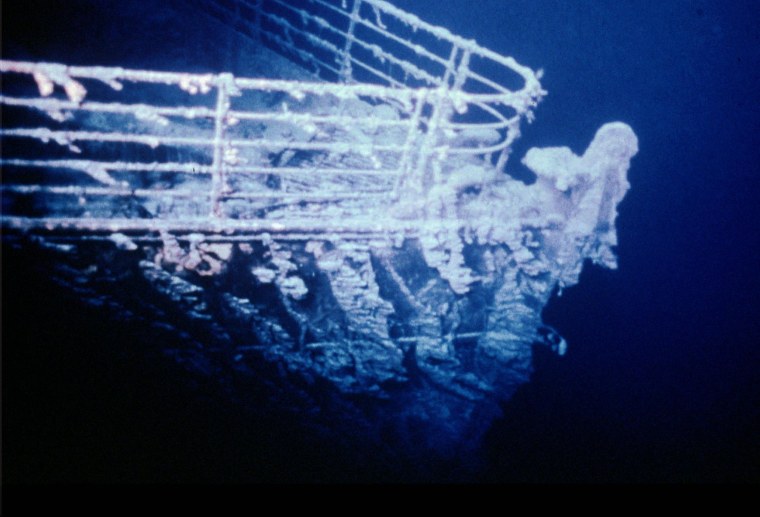The U.S. Coast Guard is searching for a missing Canadian research submersible that disappeared on Sunday after it went to explore the wreck of the Titanic.
The 21-foot submersible and its five-person crew, from the Canadian research vessel Polar Prince, started a dive on Sunday morning, according to the Coast Guard. But the Polar Prince lost contact with the vessel after an hour and 45 minutes.
The missing submersible — which is named Titan, according to the Associated Press — is part of an OceanGate Expeditions tour exploring the Titanic wreckage, located 900 nautical miles east of Cape Cod, Massachusetts. The private company charters trips to explore the wreckage with its research teams.
Rear Admiral John Mauger, the commander of the Coast Guard district leading the search, said they received a call for help from OceanGate on Sunday afternoon, after the crew lost contact and the submersible missed its return time. He said the Coast Guard immediately launched a surface and aerial search to find or recover the submersible and any survivors.
“We really brought all assets that we have available to us to bear on finding the submersible and the people in it,” Mauger said. “We understand from the operator of the submersible that there is a 96-hour reserve capacity on there, and so that gives us some time to affect a search. But when when something happens on the high seas, it gets complicated quickly.”

One of the missing crew members is Hamish Harding, the billionaire owner and chairman of Action Aviation. An Instagram post from Harding on Sunday said that he was joining OceanGate’s expedition “as a mission specialist” — typically a one-time crew member who pays a fee to join the effort.
The fees from those crew members “underwrite the mission, the participation of the science team, and their own mission,” OceanGate’s website says.
The company said it was working with numerous government agencies to aid in the rescue of the crew on its submersible.
“Our entire focus is on the crew members in the submersible and their families, we are deeply thankful for the extensive assistance we have received from several government agencies and deep sea companies in our efforts to reestablish contact with the submersible,” OceanGate said in a statement.
Mauger said the Coast Guard has brought in technical experts, dropped sonar buoys to listen for underwater noise, and reached out to other government agencies and private contractors for aid and “to really better understand what an undersea search and rescue effort would look like.”

Coast Guard officials said in a press conference on Monday afternoon that they have deployed two C-130 aircraft for an aerial search, and that the sonar buoys can listen to a depth of 13,000 feet.
The New York National Guard is providing a third C-130, and the Canadian Coast Guard provided a C-130 as well as a P8 Poseidon aircraft that has underwater detection capabilities.
The Coast Guard said it is also relying on commercial boat operators that were already in the nearby waters, as well as OceanGate’s mother ship, Polar Prince, for help.
Mauger added at the press conference that the Coast Guard is working to expand its capabilities to include an underwater search as well.
OceanGate’s submersibles have shorter power cycles than submarines and are tied to a mother ship (the Polar Prince in this instance) when operating far from land. Submarines, by contrast, can typically travel long distances independently and use a port as a home base.
OceanGate’s expeditions include a 10-day trip with 18 dives off of a larger boat to a maximum depth of 12,800 feet, according to the company. Individuals may pay as much as $250,000 to join the exploration, The New York Times reported last year.
OceanGate’s website says that during visits to the Titanic site, its teams collect images, videos and laser and sonar data for scientific study, in order to document the condition of the wreck and gather information about the flora and fauna using the sunken ship as their maritime home.
Considered the world’s most famous shipwreck, the Titanic was an opulent 883-foot ocean liner. Thought to be “unsinkable,” it shocked the world in 1912 when it struck ice in the Atlantic Ocean and sank. More than 1,500 people died.
The wreckage was discovered in 1985, about 350 miles off the coast of Newfoundland, Canada. Surrounded by debris, the ship’s two main pieces are around 2,000 feet apart, according to a full-size scan that was released earlier this year.
Continued fascination with the Titanic has sparked a tourism industry around the ocean liner and its sinking, particularly after the release of the eponymous 1997 film from director James Cameron.






Recent Comments